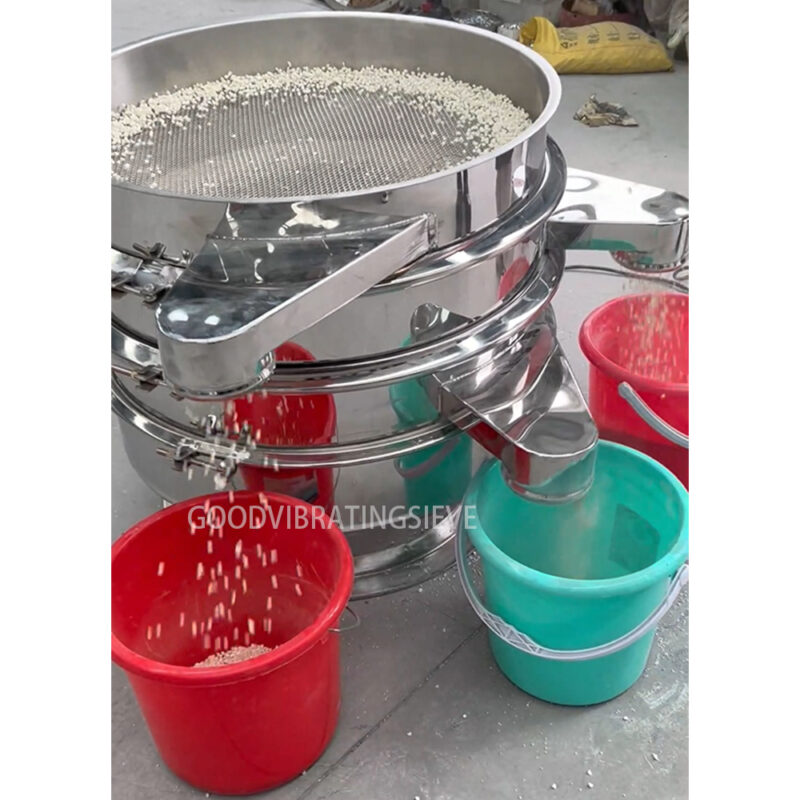Understanding Mesh Size and Its Impact on Sieve Analysis Accuracy
Mesh size is a crucial factor in sieve analysis, determining the precision and efficiency of particle separation. The mesh size, measured in microns, refers to the size of the openings in the sieve screen. A 90 micron dry sift screen, for example, has openings that are 90 micrometers wide, allowing only particles smaller than this size to pass through.
The impact of mesh size on sieve analysis accuracy cannot be overstated. A screen with a finer mesh size, like 90 microns, is essential for achieving high-resolution separation of particles in applications where precision is key. This size is particularly effective in industries dealing with fine powders, chemicals, or any material where particle size distribution is critical. By selecting the appropriate mesh size, you can ensure that your sieve analysis accurately reflects the true particle size distribution, which is vital for quality control, product consistency, and meeting industry standards.

For instance, in pharmaceutical manufacturing, the exact particle size of active ingredients can influence the efficacy of the final product. Using a 90 micron screen allows for a detailed separation of fine particles, ensuring that the ingredients meet the required specifications. Therefore, understanding mesh size and its role in sieve analysis is fundamental for maintaining high standards of accuracy and quality in various applications.
The Role of 90 Micron Dry Sift Screens in Accurate Sieve Analysis
90 micron dry sift screens play a pivotal role in achieving precise sieve analysis, especially when dealing with fine particles. These screens are designed to separate particles that are larger than 90 microns while allowing smaller particles to pass through. This precision is crucial in many industries, including pharmaceuticals, chemicals, and food processing, where exact particle sizes are necessary for product quality and performance.

The role of a 90 micron screen extends beyond simple particle separation. It ensures that the sieve analysis process is accurate and reliable, providing consistent results that reflect the true particle size distribution. This level of precision is achieved through the screen’s fine mesh, which effectively filters out unwanted larger particles and captures the finer ones.
In practice, the use of 90 micron screens can significantly enhance the quality control processes. For example, in the production of fine powders for cosmetics, a 90 micron screen can help ensure that only particles of the desired size are used, resulting in a smoother, more consistent product. Similarly, in the chemical industry, accurate particle size separation is essential for ensuring the effectiveness and safety of chemical formulations. Thus, the role of 90 micron dry sift screens is integral to achieving and maintaining high standards of accuracy in sieve analysis.
Case Studies: Successful Use of 90 Micron Screens in Sieve Analysis Projects
Real-world case studies highlight the effectiveness of 90 micron dry sift screens in various sieve analysis applications. These examples demonstrate how using the right mesh size can lead to improved precision and efficiency in particle separation processes.

- Pharmaceutical Industry: In a pharmaceutical manufacturing plant, 90 micron screens were used to analyze the particle size distribution of active pharmaceutical ingredients (APIs). The precise separation achieved by the 90 micron screens allowed the company to ensure that the APIs met the stringent specifications required for efficacy and safety. This resulted in higher quality products and reduced the risk of non-compliance with regulatory standards.
- Food Processing: A food processing company specializing in powdered spices implemented 90 micron screens to separate fine spice particles from larger debris. The use of these screens improved the consistency and quality of the spice blends, leading to enhanced flavor and texture in the final products. The precise particle size control also allowed the company to better meet consumer expectations and industry standards.
- Chemical Industry: In a chemical manufacturing facility, 90 micron screens were employed to separate fine chemical powders from coarser particles. The accurate sieve analysis provided by the screens ensured that the chemical formulations were consistent and effective. This implementation led to improved product performance and reduced waste, contributing to overall cost savings and operational efficiency.

These case studies illustrate the tangible benefits of using 90 micron dry sift screens in sieve analysis. By choosing the right mesh size, companies across different industries can achieve more accurate particle separation, enhance product quality, and improve operational efficiency.
